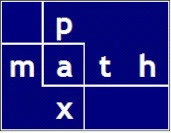Couple aspects
I present a few analytical aspects as well as real life examples.
Consider a module or a vessel to be lifted at Lugs L1 and L2.

- The red axes represent horizontal (GX) and vertical (GY)
- The blue axes are affixed to the lifted object
- Note that the location of the object CG is arbitrary; the CG is not required to be aligned with Lug L1
- Lugs L1 and L2 are lifted to get the object off the ground
- As Lug L1 is lifted higher yet, θ increases and the object is rotated
- Of course, the loads at the two lugs vary with θ
- Ultimately all the object design weight is carried by Lug L1
The following chart illustrates the loadings for the range of θ from zero to 90 degrees. I built this spreadsheet in 2008. I have never seen anyone present these graphs.

These next screenshots provide data for four key points in the lift rotation. In my spreadsheet, the maxima for shear and tension are found using Excel Solver. In lift calculations, there is no need for two decimal places results, so I round off to the nearest degree or 0.1 kip.
- Maximum tension in each lug

Maximum tension at Lug 1 (head lug)
Note cells B14 and B28
At θ = 90 degrees, L1 tension is 180.4 kips
Maximum tension at Lug 2 (tail lug)
Note cells B14 and C28
At θ = zero degrees, L2 tension is 76.1 kips - Maximum shear in each lug

Maximum shear at Lug 1 (head lug)
Note cells B14 and B25
At θ = 9 degrees, L1 shear is 105.6 kips
Maximum shear Lug 2 (tail lug)
Note cells B14 and C25
At θ = 59 degrees, L2 shear is 47.5 kips
I present a video showing the change in cable loads with respect to theta.

Finally, here are YouTube links to 3 impressive vessel lifts; a lot to see here.
Hint: turn down the volume
Lifting & Erection of vessel
48C-107
Weight 152 tons
Lift by Al Faris Group
Vessel Erection
DHT Reactor
Weight 950 tonnes
Lift by Integrated Logistics
Big Lift
C3 Splitter
Weight 1000 tons
Lift by thyssenkrupp Industrial Solutions
48C-107
Weight 152 tons
Lift by Al Faris Group
Vessel Erection
DHT Reactor
Weight 950 tonnes
Lift by Integrated Logistics
Big Lift
C3 Splitter
Weight 1000 tons
Lift by thyssenkrupp Industrial Solutions





